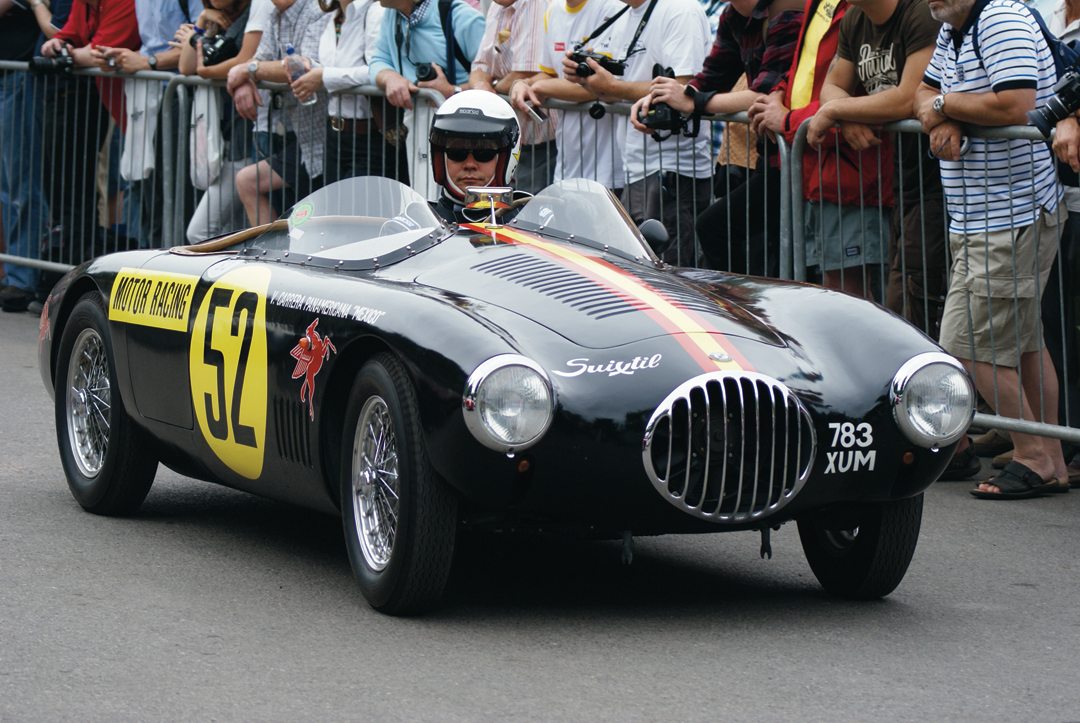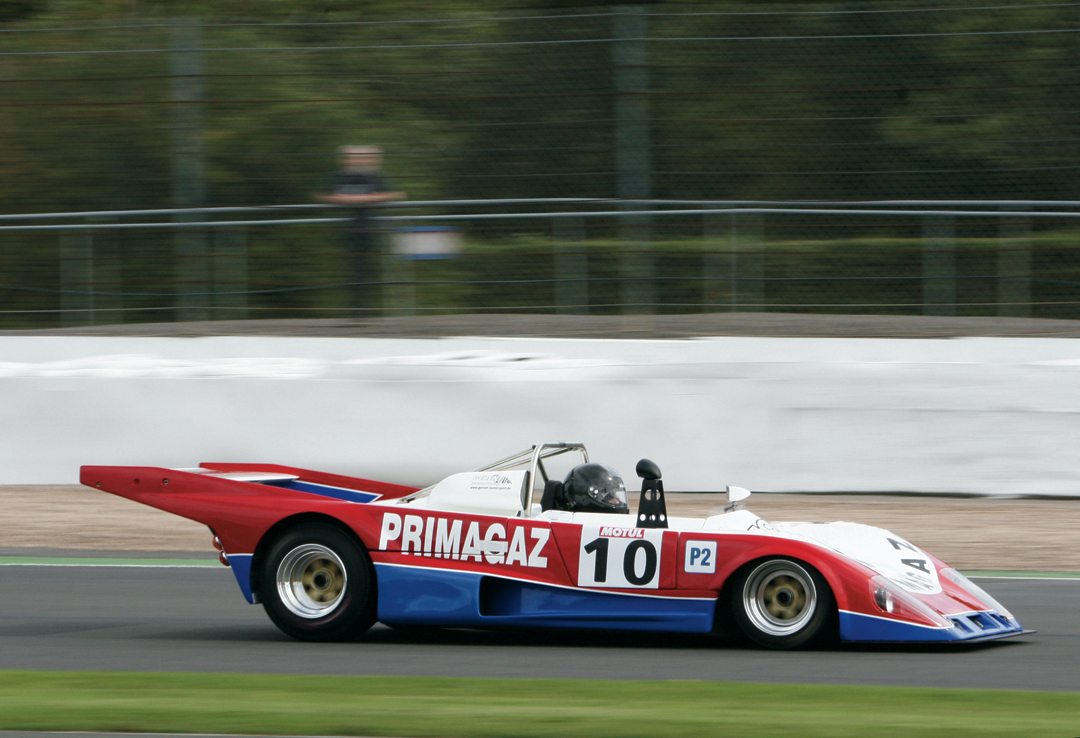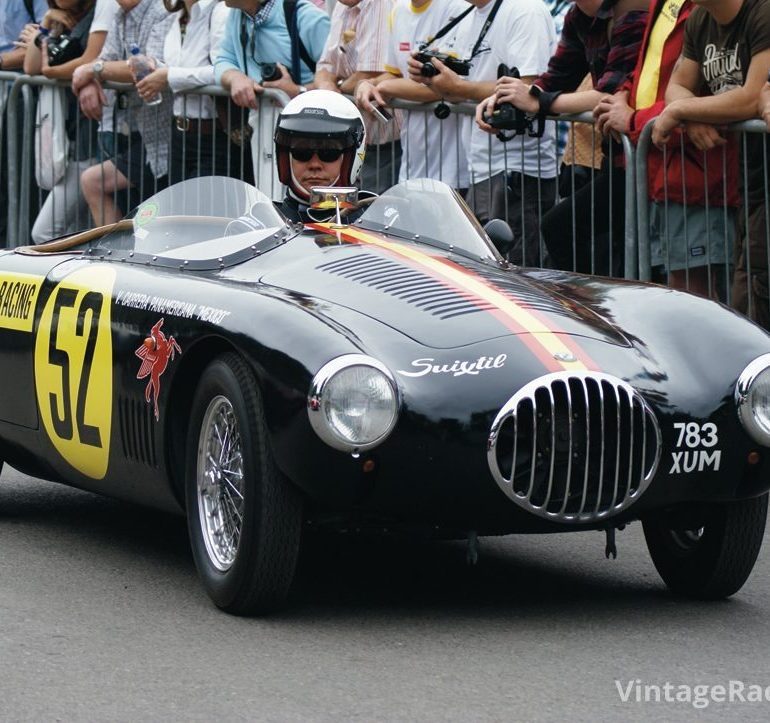Two-liter sports racing cars have always had a place to compete within the ever-changing regulations of international motorsports: the World Sports Car Championship from 1953-1961; the Speedworld Challenge from 1962-1963; the International Championship of Makes from 1964-1971 and the World Championship of Makes from 1972-1981. There was even a European Championship of Makes for cars up to two liters from 1970-1975. This allowed manufacturers to showcase their design and engineering excellence by producing a limited number of purpose-built racing cars to compete at the world’s greatest racing venues. There was great racing in the under-two-liter class. On the right circuit, these nimble cars could often get the best of their larger competitors. A World Championship of Makes with race circuits such as Silverstone, Nürburgring, Le Mans, Monza, Daytona and Sebring resulted in an era of motorsports that may never happen again. Today, these historic cars are highly sought after by collectors, not just for the admiration of their technology, but to also participate in reenactments of these famous racing events.
1956 Osca MT4 TN 1500

The Maserati brothers, Alfieri, Bindo, Ernesto and Ettore, were well known for building racing cars with their name on them before WWII. By 1947 they split with Adolfo Orsi who owned Maserati and started Officina Specializzata Costruzioni Automobili, or OSCA, in Bologna. They were dedicated to the design and build of some small-displacement sports cars. They had success with 750-cc four-cylinders and 2000-cc six-cylinder engines. These cars were driven by stars such as Stirling Moss who, with Bill Lloyd, won the Sebring 12-hour race in 1954 in an OSCA MT4. What was unique about the OSCA was that the car was entirely designed and built by them. The 1956 OSCA MT4 1500 “TN.” The M was for Maserati, the T was for Tipo and 4 was for the number of cylinders. The TN stands for “Tipo Nuevo” indicating the last evolution of the MT4 design. About 13 were built with the 1491-cc twin-cam four-cylinder engine with the Twin Spark cylinder head that produced 135-bhp. It was mated to a ZF four-speed gearbox and a revised tubular chassis with coil spring rear suspension. These beautiful little cars are highly sought after today. They are eligible to be used in the Mille Miglia and other historic races.
1978 Lola T298

Eric Broadly founded Lola Cars in Huntingdon, England, in the 1950s. By the 1960s, Lola Cars was well known for building successful sports racing and single-seat racing cars. In 1971, Lola won the Two-Liter European Sports Car Championship with the T212. For 1972 Lola was to design an entirely new 2.0-liter car with a formidable design team. Lola designers Eric Broadley and Bob Marston were joined by a young Patrick Head and John Barnard. Both Head (Williams F1) and Barnard (McLaren F1 and Ferrari F1) were later to be involved with the design of multiple Formula One World Championship-winning cars. The T290 was an improved full-monocoque design, and was one of the most advanced 2.0-liter sports prototypes of its day. It was the basis for the T292-T298 series as well as the 3.0-liter T280-T286 series.
As it evolved into the T298, the last of that two- liter series, the cars became very successful, often contesting FIA Championship of Makes endurance races, such as the 24 Hours of Le Mans and Monza 1000 Kilometers. Engines were the fuel-injected, four-cylinder, multi-valve 2.0-liter BMW M12, Cosworth BDG and Chrysler ROC. The gearbox of choice was the Hewland FG five-speed. This was a 1250-lb, 300-bhp 2.0-liter sports prototype that could often beat the larger cars on the right circuit. Today, the Lola T298 is eligible to race in the Classic Endurance Racing series in Europe, which races at the best circuits, such as Le Mans, Spa and Paul Ricard. In the USA there is a 2.0-liter FIA Group in both East Coast and West Coast racing groups. The Lola T298 is one of the best 2.0-liter racing cars money can buy.
Criteria Used For Assessing Valuations for this Guide:
- Degree of Originality
- Overall Condition, Restoration
- Technology, Design, Coachbuilder
- Production Numbers/Rarity
- Competition History
- Ownership History, Documentation
- Modern Event Eligibility
Regional Variances
The prices stated in this guide are based on U.S. values. The values of historic racing cars can vary as much as 25%-35% in other countries, depending on local market appeal, currency rates, import duties, and VAT. Most of the time, we are able to document known sales or closed escrows, as they say in real estate. When this is not possible, a logical estimate of the car’s value is given, based on its sales history and relationship to cars of its type.
The prices stated in this guide are based on U.S. values. The values of historic racing cars can vary as much as 25%-35% in other countries, depending on local market appeal, currency rates, import duties, and VAT.
LEVEL |
VALUATION CATEGORIES |
|---|---|
I |
The best combination of all criteria. |
II |
Satisfies mid-range of criteria. |
III |
In need of restoration. Meets only a few points of criteria |




